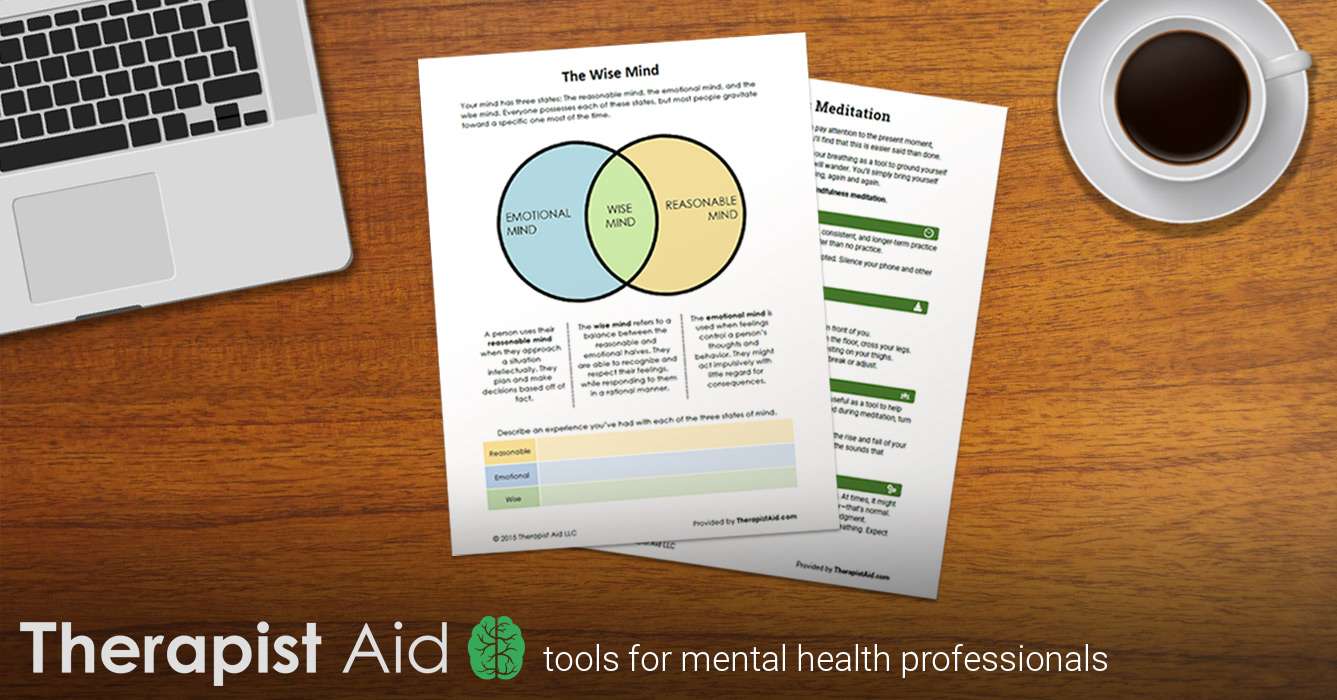Through September 2011, about 740,000 veterans from overseas contingency operations in Iraq and Afghanistan had been treated by the Veterans Health Administration (VHA). That number is slightly more than half of all recent veterans eligible for care by VHA.
 VHA spent about $2 billion in fiscal year 2010 to provide medical care to all recent combat veterans.
VHA spent about $2 billion in fiscal year 2010 to provide medical care to all recent combat veterans.
One in Four Recent Combat Veterans Treated at VHA from 2004 to 2009 Had a Diagnosis of PTSD; 7 Percent Had a Diagnosis of TBI
Using data for recent veterans treated by VHA from 2004 to 2009, CBO found that:
- 21 percent were diagnosed with post-traumatic stress disorder (PTSD) but not traumatic brain injury (TBI),
- 2 percent were diagnosed with TBI but not PTSD,
- An additional 5 percent had both PTSD and TBI, and
- The remaining 72 percent had neither diagnosis.
Treating Recent Combat Veterans Diagnosed with PTSD, TBI, or Both Was Much More Expensive Than Treating Other Recent Veterans
Average Costs for
First Year of Treatment Recent Veterans With PTSD $8,300 With TBI $11,700 With PTSD and TBI $13,800 Recent Veterans with Neither Condition $2,400
 Those amounts do not include initial care provided by the Department of Defense (DoD) or care by other providers outside of VHA. For comparison, VHA estimates that the average cost of care in 2011 for veterans of all eras will be $9,100.
Those amounts do not include initial care provided by the Department of Defense (DoD) or care by other providers outside of VHA. For comparison, VHA estimates that the average cost of care in 2011 for veterans of all eras will be $9,100.
VHA’s average costs for patients were highest during the first year of their care and declined and then stabilized in subsequent years. In the data CBO analyzed, VHA’s average costs for patients with TBI (including those with both TBI and PTSD) appear to increase in the third and fourth years. That result is probably generated by a policy change (occurring in the middle of the period CBO analyzed) related to screening for mild TBI. Without that change, costs for those patients would probably also have been highest during the first year of care and declined and stabilized thereafter.
Those results exclude about 500 patients with severe multiple injuries that received treatment in VHA’s polytrauma centers; costs for those patients were significantly higher.
VHA’s Experience May Not Reflect the Rates of (or the Costs of Treating) PTSD or TBI in the Overall Population of Recent Combat Veterans
CBO’s study examines data from veterans who sought treatment at VHA. Those data may not be representative of the overall population of recent veterans. A great deal of uncertainty surrounds the prevalence of PTSD and TBI within the population that deployed to Iraq and Afghanistan.
Other researchers have estimated that:
- Between 5 percent and 25 percent of those deployed to Iraq and Afghanistan may have PTSD when screened for the disorder after returning from deployment, and
- Between 15 percent and 23 percent have experienced a TBI (the vast majority of which are mild TBIs, also known as concussions), though the proportion still symptomatic when screened after returning to the United States is much lower—between 4 percent and 9 percent—because most mild TBIs get better within a few months.
On Wednesday, a soldier who had served in Iraq — and was being evaluated for post-traumatic stress disorder — killed three people and injured 16 others at Fort Hood, and then killed himself. While it isn’t certain that PTSD played a role in this shooting, two things are clear: that this is a tragic incident that will take a huge emotional toll on all of those involved and also that it is a relatively rare occurrence.
Still, there’s no doubt that families of soldiers live in fear of the impact of PTSD. And while the emotional consequences of the disorder are well documented, many don’t realize that PTSD can also have significant financial implications for families.
PTSD — a condition in which a person experiences a traumatic event and then has disturbing flashbacks, memories and/or nightmares and exhibits extreme avoidance behaviors and hyper-arousal — impacts about 14% to 20% of service members returning from Afghanistan and Iraq, but only between about 4% and 7% of the general population, says Terri Tanielian, a senior research analyst with policy think tank the RAND Corporation and the author of “Invisible Wounds of War: Psychological and Cognitive Injuries, Their Consequences, and Services to Assist Recovery.”
Fort Hood shooting underscores need for mental health services
The cost to treat PTSD can vary significantly — some veterans can get very low-cost care from the VA, for example, but many choose to get private care and pay out of pocket — but that can easily add up to thousands in a year. “PTSD has one of the highest costs to treat of any disorder,” says Barbara Rothbaum, a professor of psychiatry and the director of the trauma and anxiety recovery program at Emory University School of Medicine.
Cost estimates for treatment of PTSD vary widely. A study by the Congressional Budget Office based on VA data found that the average cost of treatment for PTSD in the first year was roughly $4,100 (treatment trends to get less expensive as the years go on). A study by Rand found that the annual cost ranges from about $1,160 to $4,724 per person (though this data is from 2008, Tanielian says there is little reason to think that these numbers would have changed significantly).
What’s more, some patients need years of therapy to cope with this disorder, so it’s possible that patients and their families could spend tens of thousands of dollars just on treatment, experts say. CBO data shows that four years of PTSD treatment would cost $10,000.
The costs don’t end there. Individuals impacted by PTSD also often have a higher risk of lost productivity at work, says Tanielian. PTSD sufferers “often can’t take crowds, which makes it hard to go to work or commute,” says Bella Schanzer, the chief of mental health at the John D. Dingell VA Medical Center. Rand also estimates that PTSD could cost up to about $7,000 per year per person, when you consider both the cost of treatment and lost productivity (note that lost productivity includes both lost wages and cost to the employer, which the firm did not separate out).
What’s more, those impacted by PTSD also have higher rates of other medical conditions that can also be costly to treat (though Rothbaum points out that treating PTSD often helps treat these other disorders at the same time). “With PTSD comorbidity is the rule rather than the exception,” Rothbaum says. “The majority of people with PTSD have three other disorders,” she says — with depression, anxiety and substance abuse among the most common. Rothbaum points out that roughly half of people with PTSD also have depression and/or anxiety, and that somewhere between about one-third and two-thirds of people with PTSD also have a substance-abuse problem.
On the family level, costs also arise related to a soldier’s PTSD, as “spouses and partners and some family members often also need therapy,” says Rothbaum. Indeed, Jeffrey Borenstein, a psychiatrist and president and CEO of the Brain & Behavior Research Foundation, says that PTSD can take a “tremendous toll” on families, and that family members may also suffer from depression, anxiety and sleep disturbances related to the soldiers’ PTSD.
The bad news: While a soldier often can get free therapy from the VA, family members usually can’t, unless it’s part of a group family therapy effort or the family member can show that his or her therapy is needed to help the soldier, explains Rothbaum. That can easily cost thousands of dollars a year if the family member has to pay out of pocket. What’s more, Schanzer notes that those who suffer from PTSD also have a higher rate of divorce; the average divorce can cost $15,000 or more.
The good news: Experts say there are plenty of effective therapies that work. Schanzer says that those suffering from PTSD should seek prolonged exposure or cognitive processing therapy, as both have research backing up their effectiveness, in addition to considering medication like SSRIs as well as prazosin for nightmares. Prolonged exposure therapy involves teaching patients about common reactions to trauma and revisiting the traumatic memory to help make its impact more bearable. Cognitive processing therapy helps patients understand their trauma and develop coping behaviors.
Families also need to figure out a cost-effective way to pay for therapy. Veterans should contact the VA to determine their benefits eligibility and active duty military should contact the Department of Defense. If those organizations don’t provide care to you or your family member — or you don’t want the care they give — there are also community-based therapy groups that are often free or low-cost to join, and private insurance may cover you.
More from MarketWatch:
Why drivers are paying more for gasoline
What Yellen sees when she looks at the jobs report
Social Security can’t save us from the poorhouse
PTSD treatment cost-effective when patients given choice Molly McElroy
A cost-analysis of post-traumatic stress disorder treatments shows that letting patients choose their course of treatment – either psychotherapy or medication – is less expensive than assigning a treatment and provides a higher quality of life for patients.
In a recent study, published in the Journal of Clinical Psychiatry, PTSD patients allowed to choose between therapies ended up costing about $1,622 less on average per patient per year compared with patients who were assigned treatment. Among patients not given a choice, treatment with prolonged exposure psychotherapy cost less than sertraline.
“This is one of the first studies to look at the cost of providing mental health care and comparing different treatments for PTSD,” said Lori Zoellner, co-author of the study and director of the University of Washington’s Center for Anxiety and Traumatic Stress. “It has tremendous implications for how large health care systems such as the U.S. Department of Veterans Affairs proceed with treating PTSD.”
The National Institute of Mental Health funded the study, with additional funding from the American Association of Colleges of Pharmacy.
“In evaluating how well a treatment works, we seldom pay attention to the role of a patient’s preference, although it could be particularly important in mental health treatments,” Zoellner said. “Trauma survivors with PTSD often have strong opinions about wanting to talk about the trauma or not in therapy, some believing they really need to talk about it to heal and others really wanting to avoid talking about it. They may experience greater relief when they receive the treatment that they prefer.”
Since randomized clinical trials – the gold-standard in research – don’t accommodate patients’ preferences, Zoellner and her research team used a study design called a “doubly randomized preference trial” to investigate whether giving patients a choice affects their treatment outcomes.
“Most clinical studies try to answer which treatment works best but do not factor in how giving patients choices could affect their health,” said Quang Le, lead author and an assistant professor of pharmacy at Western University of Health Sciences in Pomona, Calif. “With this study design we could isolate the effects of this patient choice and see if it is cost-effective.”
The 200 participants – all diagnosed with PTSD and aged 18 to 65 years – were assigned to a group that was allowed to select their own treatment or a group that had their treatment chosen for them.
They were then given 10 weeks of treatment with either the drug sertraline or counseling called “prolonged exposure therapy.” Sertraline, prescribed under the names Zoloft and Lustral, is an antidepressant manufactured by Pfizer, Inc., which supplied the drug for use in the study.
When study participants were given a choice, their treatment cost each year an average of $6,156 compared with $7,778 for those assigned a treatment – a difference of approximately $1,622 per patient per year.
Among the patients not given a choice of treatment, counseling with prolonged exposure therapy cost on average slightly less than pharmacotherapy with sertraline – $7,030 versus $8,650 per patient per year.
“If it isn’t possible to allow patients to choose, prolonged exposure therapy rather than the medication is a cost-effective treatment option,” Zoellner said.
The costs in 2012 U.S. dollars included the therapy, outpatient services, hospitalization, emergency department visits, pharmacy services and nonmedical services, as well as indirect costs such as losses in worker productivity.
Other co-authors of the paper are Norah Feeny, who leads the research project with Zoellner and is a professor at Case Western Reserve University in Cleveland, Ohio; and Jason Doctor of the University of Southern California.
###
For more information, contact Zoellner at 206-685-3126 or [email protected].




